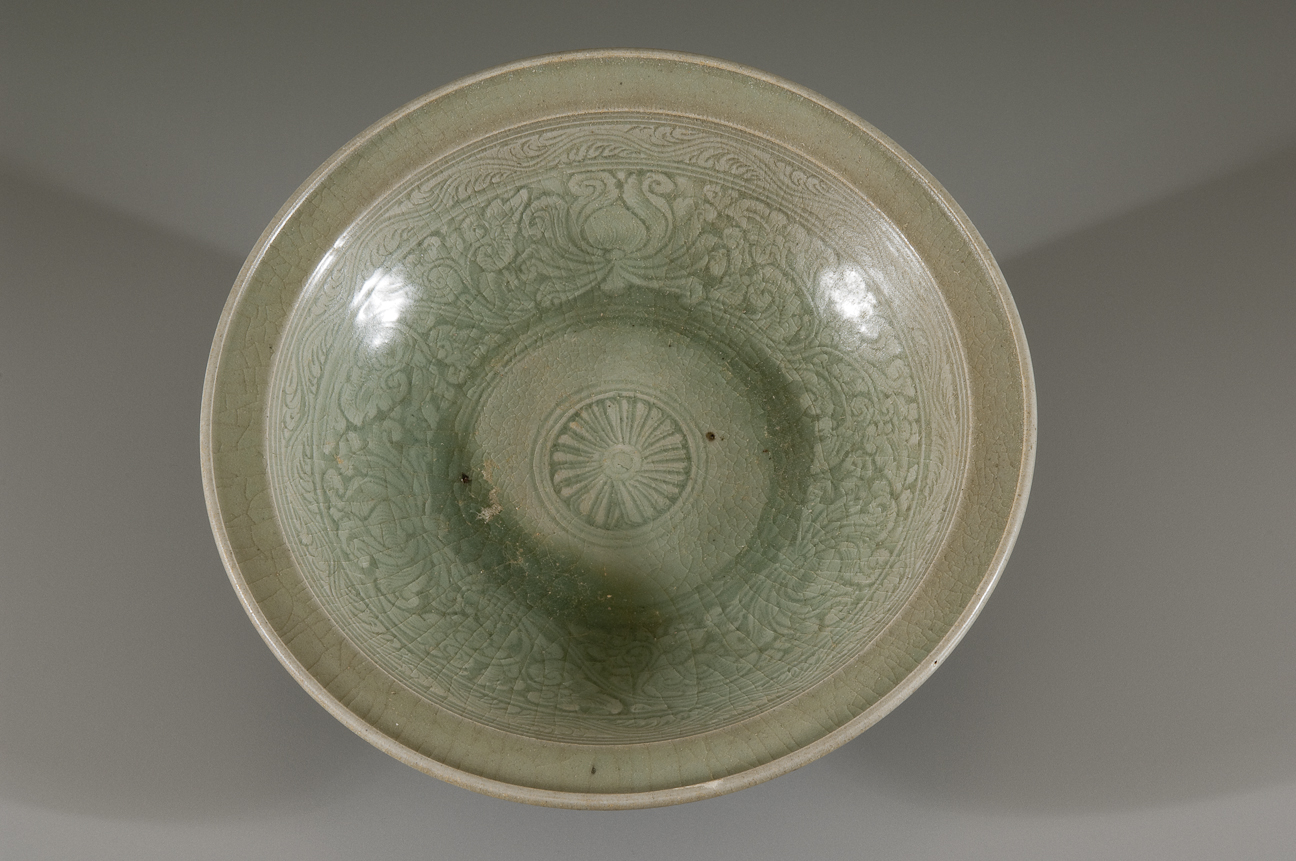Pirate treasure
I have to admit that before HoMA’s Textiles Curator, Tory Laitila, mentioned doing something to celebrate International Talk Like a Pirate Day, I was not aware such a holiday existed. While I would not want to make light of actual piracy—which is still a serious problem in some of the regions I will discuss below—ocean trade (and its dark shadow) played an important role in art history and material culture across Asia. For centuries, the treasure that drove countless merchant sailors to risk the dangers of the sea was not gold, but something perhaps more surprising: ceramics.
While porcelain and stoneware might be taken for granted today, the technology to achieve and control high-firing temperatures marked a dramatic advance for civilization when it was first developed. This technology emerged in China hundreds of years before the rest of the world, and Chinese ceramics were coveted from the Philippines and Indonesia in the east to Istanbul—and eventually Europe—in the west. By the Song dynasty (960–1279), stoneware with a celadon green glaze resembling jade, known today as Longquan ware after its most famous production center, dominated the market. Longquan ware was primarily made in southern Zhejiang Province, which was well situated to access ports from which it could be transported to island Southeast Asia. These routes were fraught with both natural and human threats, and the ocean floor in places such as the Straits of Malacca is rich in shipwrecks that today provide valuable archeological insights. The trade in Longquan ware was disrupted during the Mongol invasion of China in the 13th–14th centuries, and this allowed kilns in northern Thailand—which had recently reached a sufficient technical level to produce high-quality glazed stoneware—to step in and fill the void. After the establishment of the Ming dynasty (1368–1644), Longquan wares were made in even larger numbers, and Ming celadons can still be found throughout Southeast Asia, together with Thai wares that continued to compete with them. A 15th-century plate in HoMA’s collection is an example of the best Thai stoneware from this time.

Plate
Thailand, 15th century
Glazed stoneware
Purchase, 1953
(1757.1)
Plate, Thailand, 15th century. Glazed stoneware. Purchase, 1953 (1757.1)
The Mongols encouraged a different type of ware, with a fine white porcelaneous body, clear glaze, and underglaze cobalt-oxide-blue decoration. Early blue-and-white wares reveal considerable Near Eastern influence in their design, suggesting that the Mongols intended them for export. However, once they became available they forever changed both the domestic and international markets, and by the middle of the Ming period they were in demand around the world. The finest of these porcelains were made in Jingdezhen in Jiangxi Province. However, for most of the Ming period the Jingdezhen kilns were under official control, and other regions, especially southern Fujian Province, began to make lesser quality, but more readily available, wares for export. Thai kilns shifted from celadon wares to underglaze decoration, but were unable to match the fine white body or brilliant cobalt blue of Chinese porcelain. In northern Vietnam, on the other hand, kilns began to make blue-and-white wares that approached those from China, but they could not reach sufficient numbers to become a significant market force.
In the 17th century, the failing Ming government was no longer able to maintain control over the Jingdezhen kilns. These shifted their production to non-official commissions, both for the domestic market, and also for export to Japan, and for the recently arrived European trading companies whose presence was beginning to be felt in the region. When the Manchu rulers of the Qing dynasty consolidated their control of China in the second half of the century, Jingdezhen once again began producing official wares, but it continued to make goods for export to Europe as well. Japan, which had only started to make porcelain early in the century, soon started to make export wares as well, and competed with Chinese centers so effectively that Chinese kilns actually copied Japanese styles. European presence in Southeast Asia changed the markets in these regions to a new focus on colonial preferences. By the 18th century, Europe was making its own porcelains, but the demand for Jingdezhen wares continued, and Jingdezhen became increasingly sophisticated in its ability to tailor its porcelain for foreign tastes.
Humble clay, transformed through the alchemy of firing into treasure worthy of an emperor, drove traders—and pirates—to risk daring feats of seafaring, in which they could make their fortune, or be lost to Davy Jones’ locker where they would tell no tales.
– Shawn Eichman, Curator of Asian Art